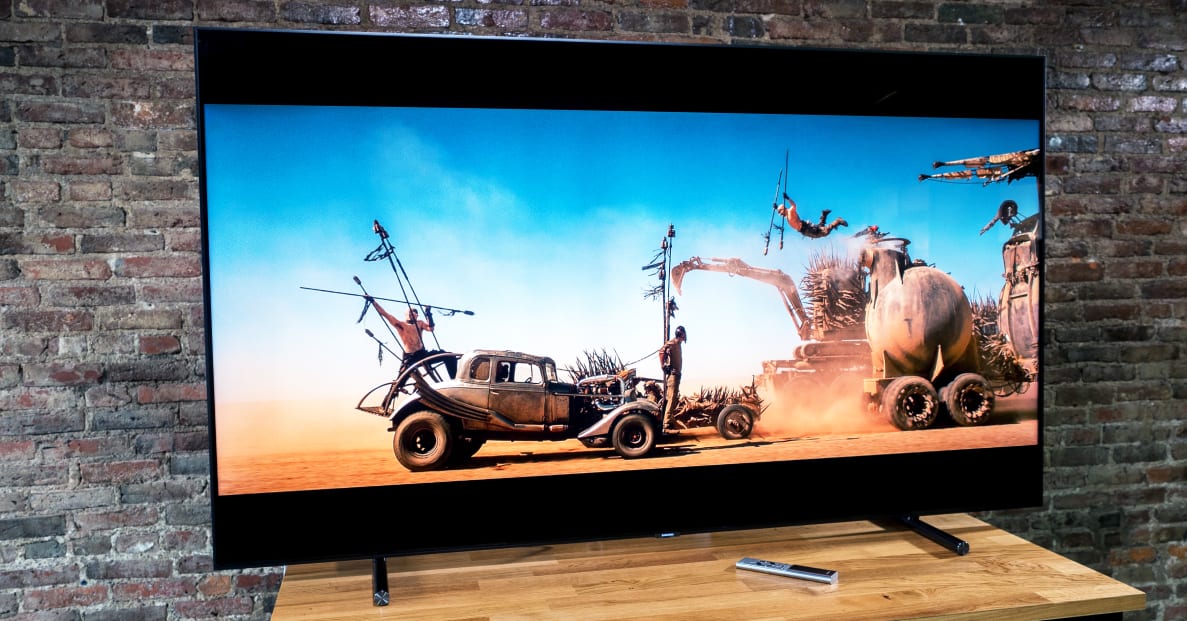Pros
-
Quantum-dot technology
-
Incredible 4K, HDR-compatible picture
-
Better-than-average viewing anglles
Cons
-
Some black-level inconsistency
Heading up Samsung's "QLED" series, the Q9 TVs—available in 65- and 75-inch sizes—are priced to compete with the year's most impressive TVs. Samsung is confident that its flagship series will eclipse, and perhaps even outperform LG's impressive-but-pricy OLED models, thanks in no small part to the utilization of proprietary "quantum dots," nano-crystals that give the Q9 sets jaw-dropping color and brightness.
Just as we expected, the Q9 flagship is a knockout set. While it didn't quite crest the pretty insane benchmarks that Samsung claimed it would back during CES in January, it's nevertheless one of the best LED TVs I've seen—and I've seen a lot of them.
Where 65-inch sets are concerned, the $3,500 Q9 is one of the year's top choices for big-spenders and videophiles. It's not perfect, but it stands up pretty well next to our top-rated 65-inch TV, the LG C7 OLED. While the Q9 is by far the brighter of the two, the C7 blows it away where contrast and shadow production are concerned. Which one you go with really depends on the room you'll be watching in.
About the Q9 Series
{{ amazon name="Samsung QN65Q9 65-Inch 4K Ultra HD Smart QLED TV (2017 Model)", asin="B06XGXFPXG", align="right" }}
Samsung's Q9 flagship series is available in two screen sizes:
• 65-inch (Samsung QN65Q9), $3,499 • 75-inch (Samsung QN75Q9), $7,999
We received the 65-inch Q9 on loan from Samsung, and gave it 24 hours to run and break in prior to review/evaluation.
While the 75-inch model is notably more expensive, I'd expect its performance to be almost identical to our findings for the 65-inch model in this review. Both Q9 TVs are edge-lit LED TVs with 4K resolution, HDR compatibility, and quantum dot-enhanced color and brightness.
Finally, it's worth noting that while the Q9 models have dropped in price considerably—the 65-inch Q9 started at $5,999 and the 75-inch Q9 started at $9,999—don't let these huge price drops fool you into thinking you're getting an incredible deal on these sets. Yes, they're more attractive now, but Samsung also makes a habit of starting their TVs at much higher prices than most sane people would pay.
A damn good-looking TV, as you'd expect for this price
Our 65-inch Q9 might boast one of the best picture qualities in the history of LED TVs, so you'd better believe Samsung wants it winning design accolades, too. Fortunately for Samsung, the QN65Q9 boasts one of the company's best designs in years, in my opinion.
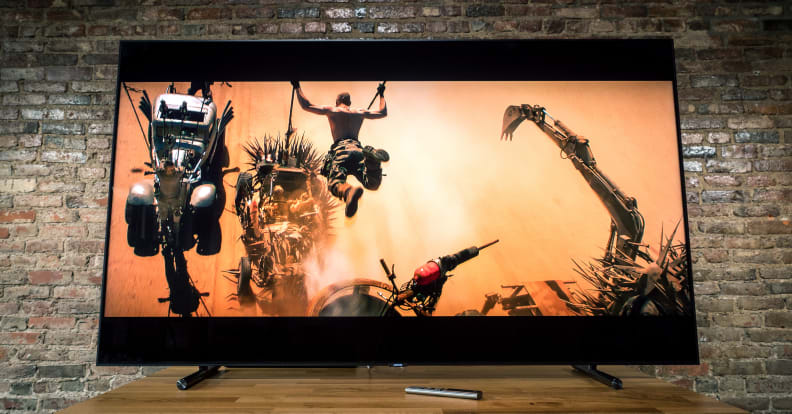
This TV is surprisingly sturdy—like a thick sheet of metal—and almost uniform in thickness from edge to edge. It's not nearly as thin as a lot of edge-lit LED TVs, but rather than appearing bulky, it looks chiseled. Two rounded and extremely minimalist feet give it a sturdy footprint but keep it close to the tabletop. It's altogether a refreshing take on the average edge-lit LED TV, and is reminiscent of Samsung's old plasma models.
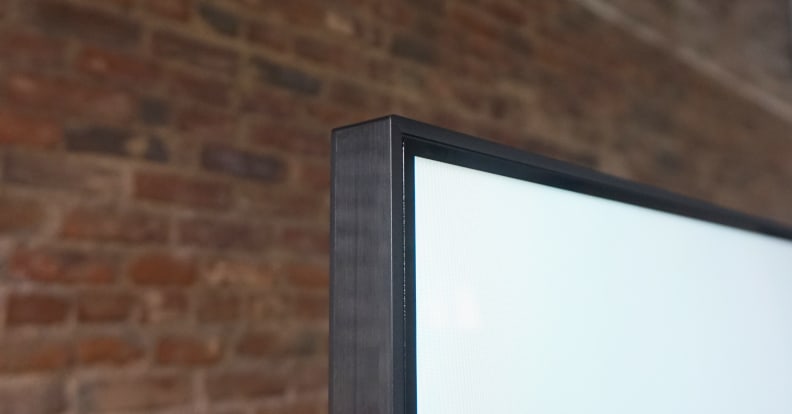
The fun doesn't stop at the TV itself, however. As has been the case with Samsung's high-end sets for the last few years, the Q9 also includes the Samsung "OneConnect" box. If you haven't heard, the OneConnect box is an external mainboard device that connects to the Q9 via a single cable, and houses the TV's audio and video ports. You also need the OneConnect for any and all software/smart features, so definitely take care with it. This one is quite a bit bigger than the "OneConnect mini," which is included with more affordable Samsung TVs.
On the OneConnect box, you'll find a robust selection of ports: four HDMI ports (all HDCP 2.2/HDMI 2.0 compatible); three USB 2.0 inputs; a coaxial input (for cable or satellite connections); an optical audio port; and a LAN (ethernet) input. Notably missing are component and composite inputs, but I imagine if you're thinking about buying a TV of this pedigree, you're not using red, white, and yellow AV cables anymore.
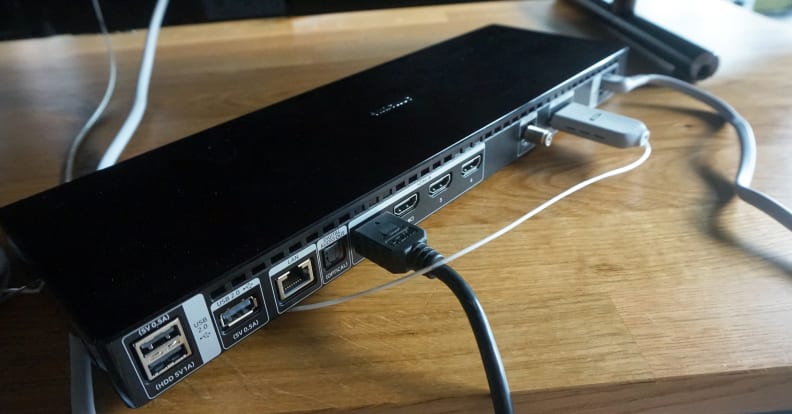
The coolest thing about the OneConnect box this year is the way in which it connects to the TV. Unlike the thicker, more visible cable from years past, this year's QLED TVs use an "invisible" connector. It's an extremely thin/narrow and clear cable, a lot like an optical audio cable, and small enough to spool around a hide-able rubber dongle that fits into a compartment behind the TV.
The result? A very "clean" look for the TV, and an easy way to keep your inputs/source devices organized and hidden. The invisible cable allows you to discreetly stash the OneConnect box in the same cabinet or TV stand as your game console, Blu-ray player, or whatever else. Even if you stream everything and don't have anything plugged in, it means the TV can stand alone on the tabletop, minimal and unfettered by clutter. It's also a great option for wall-mounting!
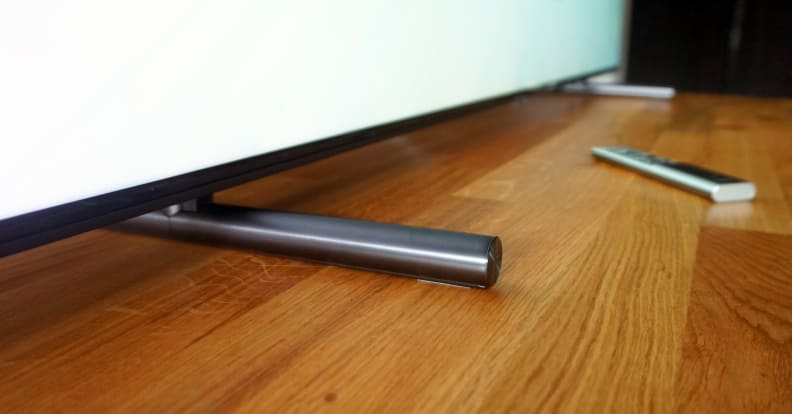
Last but not least, the included remote control is a singularly sexy, simple solution to an age-old TV pairing. This silvery wand is Bluetooth enabled, and works quickly and seamlessly as you leap through menus and the smart interface. The button layout, functionality, and weight/feel of the remote match the sturdy, posh aesthetic that the S9 itself propagates. I guess I'm saying, it's an appropriate accessory.
As you'd probably expect, the picture quality is just dynamite
On a spec sheet, the Q9 sounds very impressive. It's a 4K, HDR-compatible smart TV bolstered by Samsung's proprietary "quantum dots." Quantum dots are tiny nano-crystals that are capable of emitting huge amounts of light and color when utilized by backlit LED TVs, and they're really out on parade here.

In fact, brightness and color are the Q9's bread-and-butter, and the staple advantage of Samsung's entire QLED lineup. Like last year's quantum dot-equipped Samsung models, the Q9 delivers dazzling HDR brightness well over 1,000 nits—though I never measured anything close to the ~2,000 claimed during CES. As TVs have gotten brighter over the last few years, they've also gotten more colorful, and the Q9 not only delivers, it ups the ante.
Especially if you haven't upgraded your TV in 5-6 years, the color/brightness on display will blow your socks off—whether you're watching regular content (with or without the excellent HDR-imitation mode, "HDR+") or true-blue High Dynamic Range material.

In other areas, the Q9 passes the gut check, though it doesn't drop jaws too much more than the average high-end 4K TV. Motion procesing during streaming content, Blu-rays, and broadcasts is all on-the-level with other 120 Hz LED TVs, which means only the pickiest frame fanatics will find things to take issue with. The TV delivers accurately neutral grayscale tones (in Movie mode, anyway) and properly renders standard (8-bit) and next-gen (10-bit) content.

If you're a dedicated TV review reader or you consider yourself a videophile, you've probably noticed I haven't mentioned one of the most important cornerstones of TV picture quality: black level. Black level, or how dark a TV's shadows are, is still the deciding factor in how much contrast a TV is capable of, as much as LED TV makers want to argue that brighter and brighter highlights make the same difference.
Well, you'll be relieved to know that the Q9 doesn't drop the ball in the shadow production department, despite that its the TV's weakest point. During non-HDR content, viewers can expect black levels around 0.05–0.06 nits, which is on par with the best LED TVs you can buy outside of full-array local dimming models. The black levels rise to what would normally be considered "unacceptable" levels (0.1 or higher) during some HDR scenes, especially those featuring large swaths of bright areas. This might give purists pause, but in my experience, the black levels still appear very good by contrast with the dazzling brightness on display.

However, this does mean that you may be risking seeing cloudy shadows or bits of light bleed if you watch this TV in a darkened theater environment. While some might argue this makes it less ideal for certain activities, like watching movies, it may also be that our idea about ideal viewing environments being very dim or totally dark needs to change. The Q9 can hold up to competition from an amount of ambient lighting that would wash out 99% of TVs from the last half-decade, and that's worth some praise.
At the end of the day, however, where current expectations for ideal TV performance stand, it's still edged out in picture quality by one of LG's similarly priced OLEDs. While viewers with very bright rooms might not want an OLED, most of us still watch content in dim or darker environs, making an OLED the better choice, even if only by a slight margin.
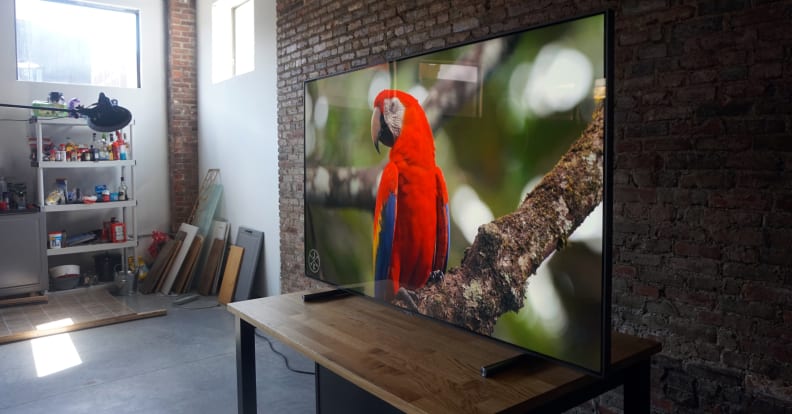
Samsung's smart features continue to get the job done
It's worth mentioning the Q9's smart features if only to confirm that they at least don't detract from the TV as a product. Samsung's Smart Hub continues offering snappy responsiveness; a clean—almost clinical—user interface; and heavily researched, intelligently tooled systems that make tasks intuitive and effective, whether you're adjusting the picture mode, joining a WiFi network, or just trying to find apps.
It's a hard thing to put a stamp on. On the one hand, navigating the smart features and menu interface is a good experience. On the other, it's not a selling point of the TV. Like the design, it deserves a tip of the hat, but you really shouldn't get this TV for any reason other than to acquire the best LED TV picture quality around.
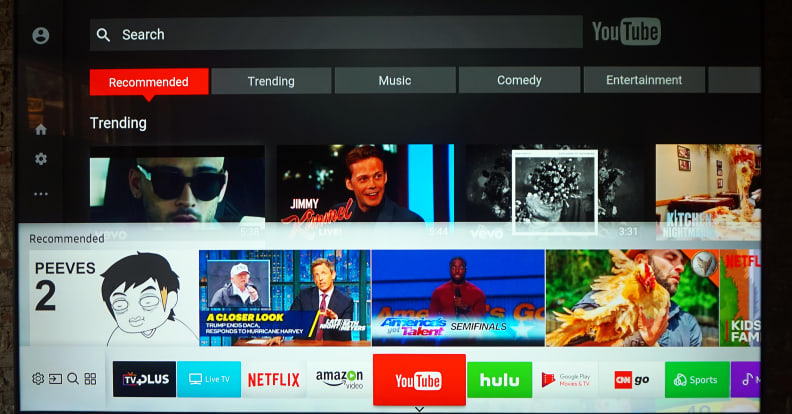
Should you buy it?
Yes—especially if you like to watch content in brighter rooms
There's been debate all year about "QLED vs. OLED," "which one is better," etc etc. Samsung's Q9 flagship proves that well-tooled LED TVs with enough backlight horsepower can deliver a dazzling brightness/color experience that some viewers might actually prefer over OLED's abyssal black levels. Performance here is commendable, and the TV's sturdy gunmetal shell and Apple-esque minimalism in software and execution make it a sight to behold.
However, considering that you can get the 65-inch LG C7 OLED for around $3,000, the Q9's $3,500 price feels a bit steep. I'm not outright saying OLED is better, but it's like this: OLED TVs are perfection in dim and darkened rooms, and are bright enough now that they shine just fine in all but the brightest rooms. The Q9 QLED knocks socks off in bright and middle-darkness rooms, but not only is its intense brightness a bit too much for a home theater scenario, but its HDR shadow production shows some threads when everything in the room is dark.
Still, being a bit shy of the quality of our #1 ranked TV is nothing to be ashamed of. Unless you have eyes like a hawk, this TV is going to seriously impress you—and it looks so good you'll probably want to leave the lights on anyway. Samsung's Q9 flagship TV is an excellent performer, whether you're watching standard content or the very impressive High Dynamic Range movies available on Netflix, Amazon Video, and Blu-ray, to name a few.
Below you'll find the in-depth, nitty gritty rundown of both the Q9's core "SDR" performance (8-bit color/grayscale rendering) and its HDR results compared to 10-bit HDR standards (the DCI-P3 color space and the BT.2084 gamma curve).
All of these results were gathered using CalMan Ultimate. Questions? Comments? Feel free to email or tweet at us!
SDR Results
On the right are the Q9's core picture results in Movie mode. On the left are the same results with "HDR+" enabled, affecting incoming SDR signals.
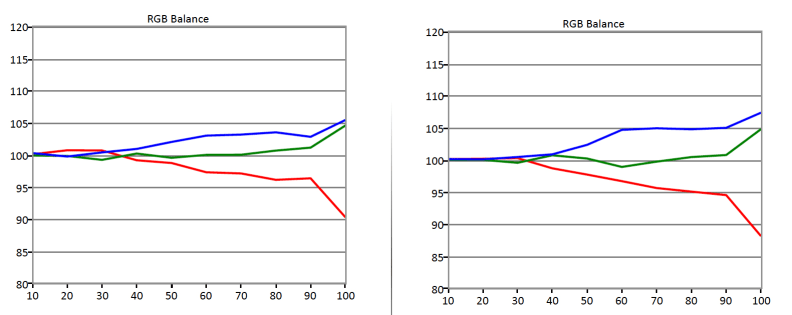
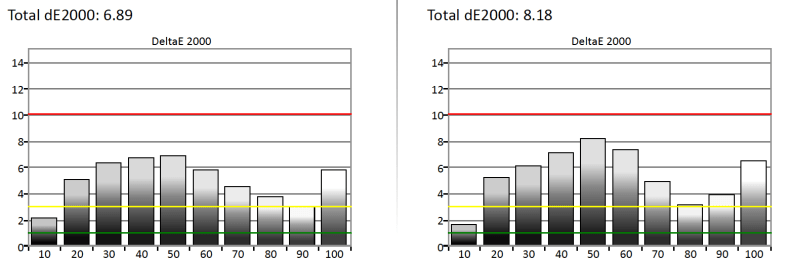
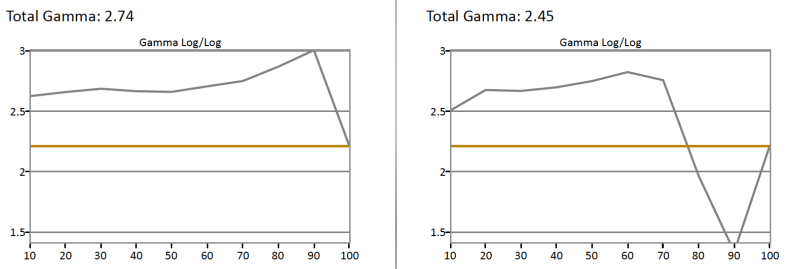
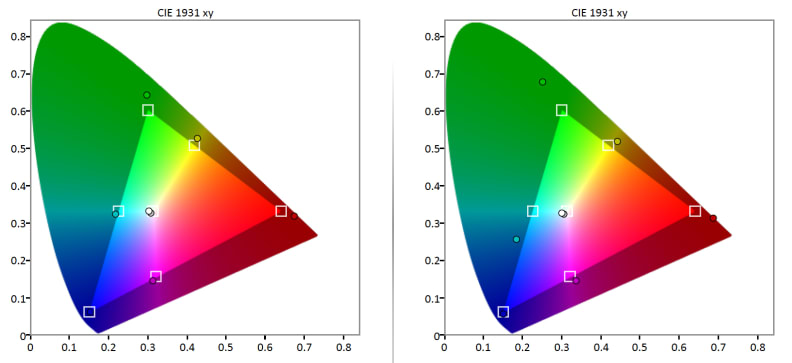
HDR Results
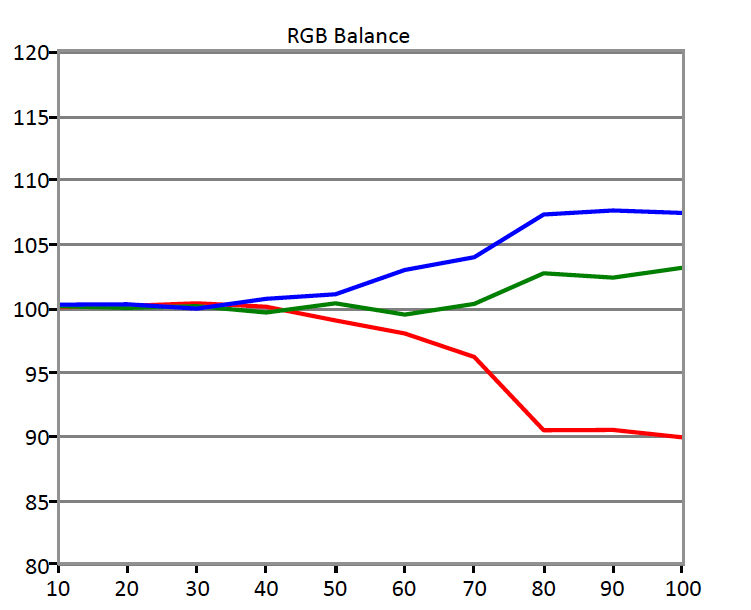
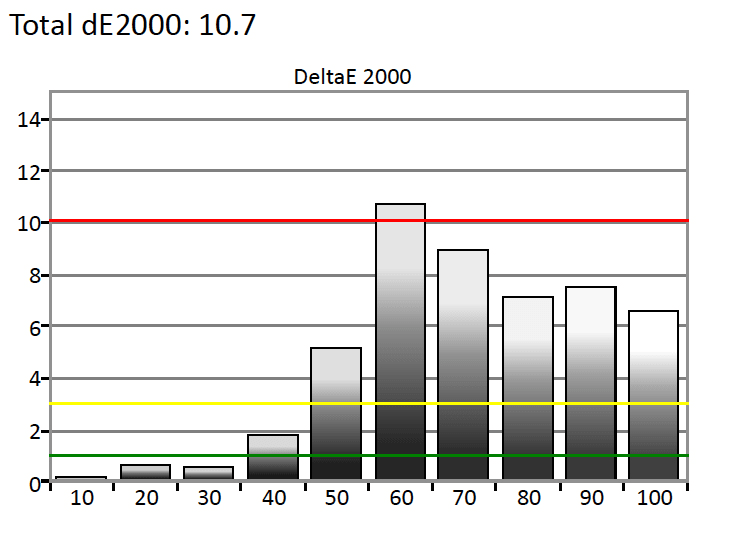
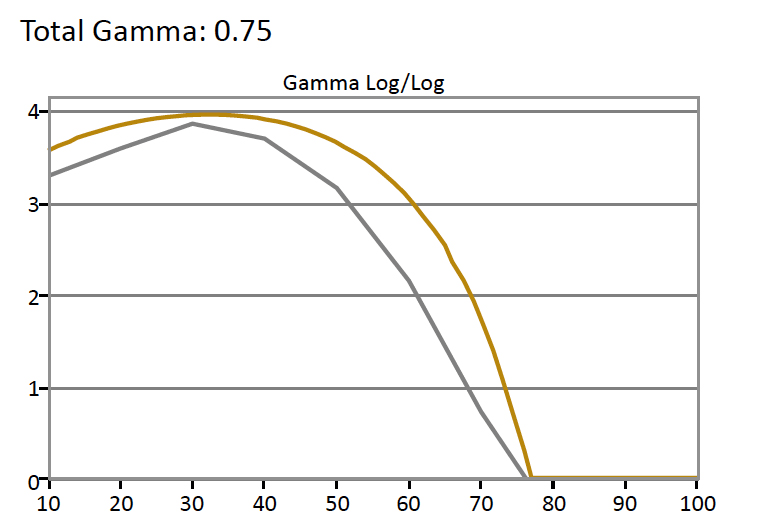
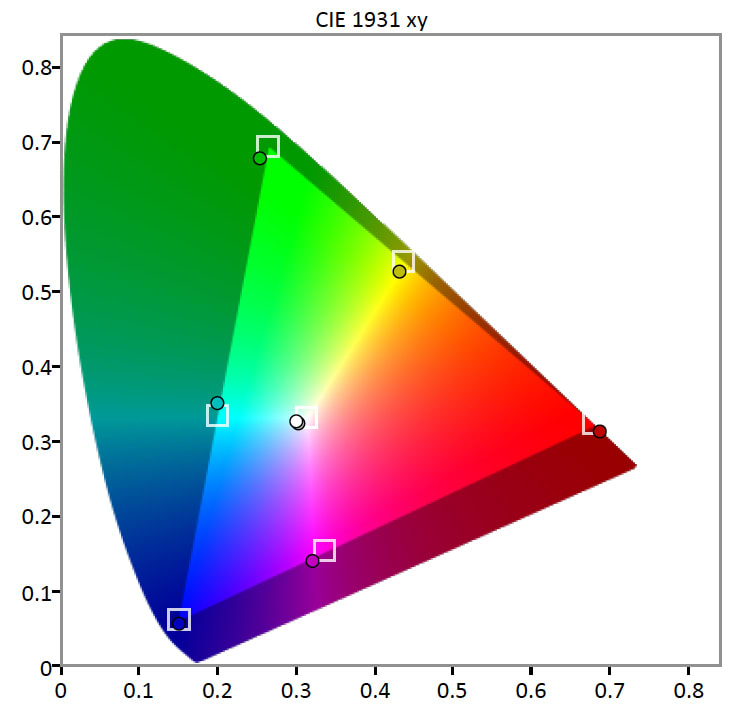
Meet the tester
Lee was Reviewed's point person for most television and home theater products from 2012 until early 2022. Lee received Level II certification in TV calibration from the Imaging Science Foundation in 2013. As Editor of the Home Theater vertical, Lee oversaw reviews of TVs, monitors, soundbars, and Bluetooth speakers. He also reviewed headphones, and has a background in music performance.
Checking our work.
Our team is here for one purpose: to help you buy the best stuff and love what you own. Our writers, editors, and lab technicians obsess over the products we cover to make sure you're confident and satisfied. Have a different opinion about something we recommend? Email us and we'll compare notes.
Shoot us an email


